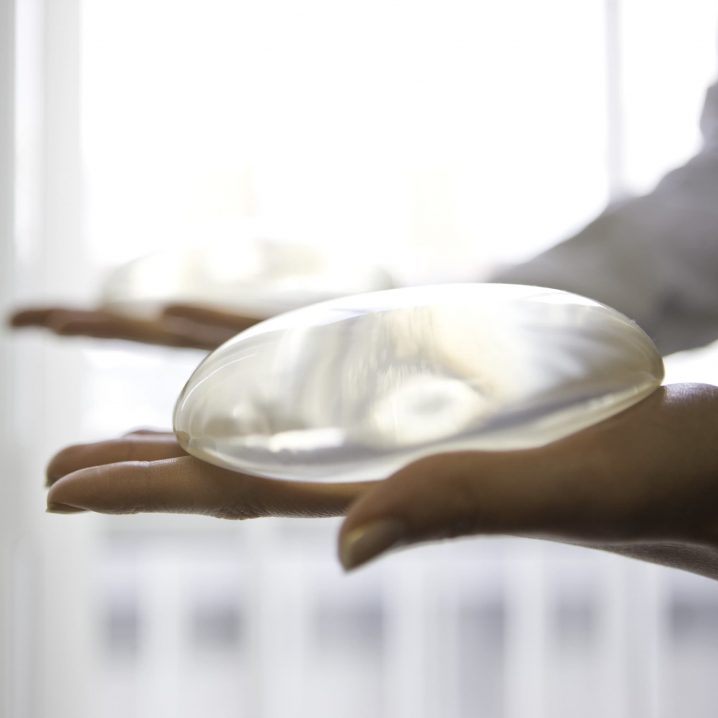
- POPSUGAR Australia
- Beauty
- Everything You Should Know About Breast Augmentation
Everything You Should Know About Breast Augmentation

- Breast augmentations are a popular plastic surgery procedure.
- There are a lot of factors to consider: cost, implants, fat transfer, recovery, and more.
- Here, a board-certified plastic surgeon answers all of your questions.
If you’re trying to decide if a breast augmentation is right for you, you probably have some questions. Getting any form of plastic surgery is a big decision and not one that should be taken lightly. You have to consider whether saline or silicone implants or breast augmentation with fat transfer is right for you. There’s also the breast-augmentation recovery time to take into account and, of course, as with any cosmetic procedure, the cost and risks.
With so many celebrities opening up about their plastic-surgery procedures and many, including Chrissy Teigen, Danica Patrick, and Kehlani, getting their implants removed due to suspected breast-implant illness, you want to make sure you have answers to all of your questions before committing.
Ahead, a board-certified plastic surgeon is breaking down everything you should know about breast augmentation.
What Is a Breast Augmentation?
To start, let’s go over what breast augmentation is. Many people think this surgery always involves implants, but that’s not the case. “Breast augmentation refers to any procedure that increases breast volume,” Elise Min, MD, board-certified plastic surgeon, tells POPSUGAR. “This can be achieved through prosthetics like a breast implant or by harvesting fat from the patient’s body and transferring it to the breasts.”
If you go the implant route, there are two popular categories: silicone and saline. “The palpability of the two types of implants is slightly different, which patients often keep in consideration when deciding which is best for them,” Dr Min says. “Silicone implants are less likely to ripple than saline implants when placed under thin breast tissue.”
Both types of implants come in different sizes, and your doctor can help you select the right size for you based on your anatomy and desired outcome. “Additionally, silicone implants have different levels of gel cohesivity, impacting firmness.” Something else to keep in mind when selecting silicone implants is the upkeep that’s required, even after you’re fully recovered. “The FDA recommends routine imaging to rule out implant rupture, and everyone should plan for implant removal and/or replacement in the future,” Dr Min says. “However, the duration of the implants will vary for each patient.”
Having a talk with your doctor can help you determine the best option for you. This can also help you determine if fat transfer is a better option for you.
Breast Augmentation With Fat Transfer
Breast augmentation via fat transfer is very different from implants and is becoming more and more popular among people seeking to enhance their breasts in a natural-looking way. “Fat is harvested via liposuction cannula from areas of the body that typically hold excess fat, such as the midsection,” Dr Min says. “Instead of discarding it, we purify the fat and inject the live fat cells into the breasts.” The fat extracted from the body never hits the air and is immediately placed into the chest to add fullness to your breasts.
“Breast augmentation with fat transfer is an excellent option for anyone who wants natural-looking results, no breast incisions, and minimal downtime,” she says. “It’s ideal for patients who wish to increase their breast size by about one cup size and can also be used to correct minor breast asymmetry.”
The Benefits of a Breast Augmentation
Before committing to surgery, you want to ensure breast augmentation is right for you and will deliver the results you’re looking for. There are certain things that can’t be achieved through breast augmentation. The two biggest benefits of the procedure are breast fullness and symmetry and increased self-confidence.
“People undergo the procedure for different reasons, but ultimately, they all circle back to boosting self-esteem and improving how the patient feels about their body, clothed and naked,” Dr Min says. “Not only do clothes and bras fit them better, but the overall energy patients exude when they come in for their postoperative visits is so positive.”
What to Expect During a Breast Augmentation
Ahead of your breast augmentation surgery, your surgeon will decide with you the size, type, and placement of your implants and the location of the incision. The surgery is an outpatient procedure where general anaesthesia is used. “In the operating room, the surgeon will make a short one-inch skin incision in the area previously discussed with the patient,” Dr Min says. There are three common incision locations: inframammary fold, which is in the crease underneath the breast and leaves behind a short scar; peri-areolar, around the edge of the areola, helping camouflage the scar better; or axillary, which involves going through the armpit and keeps the breasts scar-free. “Next, we dissect the pocket where the implant will be placed – over or under the muscle,” Dr Min says. Using implants, the procedure takes about an hour; with fat transfer, it can take between two or three.
Breast-Augmentation Recovery
The recovery process for a breast augmentation lasts around four to six weeks, with progress happening every week. The good news is, you’ll be able to go home the same day as your surgery. “[You’re] up and walking, starting the day of surgery, but will usually have some degree of pain, swelling, and tightness – especially those who undergo a sub-muscular breast augmentation with implants – which typically resolves in a few days,” Dr Min says. During the initial recovery phase, you’ll have to wear a medical compression bra on top of your chest bandages, as well.
Around the four- to six-week postoperative period, you need to continue to avoid heavy lifting and strenuous activity.
Breast-Augmentation Cost
The cost of breast augmentation varies depending on different factors, including the surgeon you visit and the state you live in. According to the American Society of Plastic Surgeons, the average cost is around $4,000 to $5,000 before additional hospital fees you may be subject to. To get the exact price of your operation, consult with your doctor.


